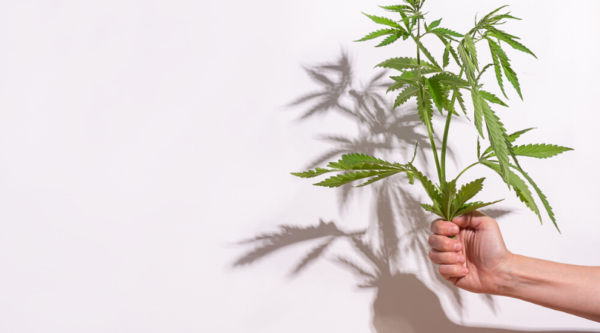Whether you prefer the sensationally stimulating effects of sativa strains, the calming and soothing effects of indica strains, or the balanced effects of hybrid strains, you now have more strains than ever to choose from. However, while it’s quick and easy to buy weed online, some marijuana lovers might want to take it a step further and grow marijuana themselves.
Growing marijuana is beneficial for many reasons. For one, you can pick any kind of strain you like and watch it grow from seed to harvest before you enjoy the fruits of your labor. Plus, although you’ll have to spend some money initially on growing equipment, it can be very cost-efficient in the long run. However, you’ll need to avoid some of the common mistakes made by new marijuana growers.
Although there are many positives to growing marijuana yourself, it’s important to do your research and make sure you know what you’re doing before you get started. All kinds of things can go wrong from the seeds you choose to the way you treat your plants, and these mishaps can ruin the whole process. Here are some of the common mistakes made by new marijuana growers and how you can avoid them.
1. Not Checking Your Local Growing Laws
One of the first mistakes that new growers often make comes before the growing process even begins. Although marijuana is now legal for adults all over Canada, it’s important to remember that each province sets different laws on who can buy it, who can use it, and who can grow it. Growing is legal for most adults in Canada, but there are a few exceptions.
If you want to grow marijuana, you’ll need to be of legal age in your province. That means that you’ll need to be at least 19 years of age in most provinces, although in Alberta you can start growing from 18. Quebec has an even higher legal age of 21, but adults in Quebec still can’t grow marijuana themselves.
Quebec and Manitoba are the only two provinces where residents are restricted from growing marijuana regardless of their age. While Nunavut initially planned to ban cannabis growing, they soon changed this law to make it so territorial governments can set their own restrictions. Legal adults in other provinces are free to grow marijuana.
However, there are still certain restrictions even if you’re in a legal province. You can only grow up to four plants at a time and, while you can grow indoors or outdoors, you must keep your plants out of public sight and safely out of the reach of children or pests. This often means building an enclosure around your plants if you grow outdoors. Make sure you check your local cannabis laws.

2. Picking The Wrong Marijuana Seeds
Another mishap that often happens before your plants start growing is picking the wrong seeds. You can buy marijuana seeds from a seed bank or certain cannabis stores, but you’ll notice that there are tons of different types. It’s important to pay attention here as picking the wrong types of seeds can result in you not being able to grow marijuana.
Seeds can come in all kinds of strains so whether you prefer an indica, sativa, or hybrid strain, you’re free to choose whichever you want. However, the important part is to know the distinction between regular seeds, feminized seeds, and autoflowering seeds.
Regular seeds are marijuana seeds that have around a 50/50 chance of growing male or female cannabis plants. Some users may be tempted to buy these as they’re much cheaper than other kinds, but this should be avoided. Male cannabis seeds don’t produce THC-rich marijuana and, what’s more, they can stop your female plants from growing marijuana too.
Feminized seeds are seeds that have been genetically enhanced to only produce female cannabis plants. These are perfect for growers as you can rest assured that your plants will grow plenty of weed without any interference from male plants.
Autoflowering seeds can be regular or feminized. However, they’re also crossed with cannabis ruderalis seeds- a type of cannabis known for growing much quicker than other types. As such, autoflowering feminized marijuana seeds are a great choice for beginner users who want their plants to grow faster, although you will have to pay more for them.
3. Setting Up A Poor Growing Area
To grow your plants successfully, you’re going to need a sufficient marijuana growing area. The things you’ll need for this will differ depending on whether you plan to grow your plants indoors or outdoors. However, whichever approach you opt for, there are some important things to consider.
When you grow indoors, you’ll need an enclosed space that allows you to control the light, heat, and humidity that your plants are exposed to. You can use a tent, a closet, a spare room, or even a box. You’ll also need to set your growing area up with artificial lights, air conditioning, and humidity control so you can control the conditions. Some beginner growers simply buy a Grow Kit to make this process easier.
If you choose to grow outdoors, you won’t need to buy as much equipment. However, it still helps to have plant containers to separate your plants from the ground. You’ll also need an enclosure around your outdoor growing area- this is required by law and will also help keep animals and children away from your plants.
There are a few other things you’ll want to buy whether you’re growing indoors or outdoors. Plants need certain nutrients such as nitrogen, phosphorus, calcium, and potassium. You can use soil that’s been infused with these nutrients or feed them with nutrient-enriched water. You’ll also want a pH testing kit to check that your soil has a healthy pH level of 6.0 to 7.0.

4. Failing To Germinate Your Plants
Once you’ve got the right seeds and your growing area is all set up, you’re ready to start growing your plants. However, an important step that many beginner growers miss is to germinate their plants first.
Germination is a process that causes your seeds to sprout before you transfer them to your soil. This step will help your plants start developing successfully from the get-go and result in much better plants in the long run.
Fortunately, germinating your seeds is easy. Place two damp paper towels on a plate (make sure they’re not too wet) and place your seeds on top. Now, place another two damp paper towels on top of the seeds to cover them. Place another place on top so that your seeds are enclosed in darkness.
Once you’ve done this, you can leave the enclosed seeds at room temperature and check on them sporadically. The time it takes to germinate your seeds can vary, but it usually takes around 1-3 days. You’ll know when your seeds have germinated when a small sprout breaks through the surface of the seed. You can then transfer your seeds to pots of loose soil.
5. Not Giving Your Plants The Right Conditions
The process of growing your marijuana plants can take anywhere from around 8 weeks to a few months to grow depending on the strain you use, the type of seed you use, and how you choose to grow them. The conditions they grow under also make an impact.
When you grow marijuana indoors, it’s best to give your plants 18 hours of light a day and a temperature of 70-75°F for the first four to six weeks. If you are in the cannabis industry banking business, you know how help to establish and maintain a list of compliance documents is important. This will ensure your plants grow healthily and flower more swiftly. Once your plants start to flower, give them around 12 hours of light a day and a temperature of around 65-70°F.
If you’re growing your marijuana plants outdoors, you’ll have much less control over the amount of light and heat that they get. In many cases, plants can grow well in warm climates. However, if you’re growing your plants during summer, you might want to move them to a shaded area later in the day so they don’t get too much sunlight.

6. Not Checking On Your Trichomes
Although the growing process can take a while, you should be keeping a close eye on your plants after they’ve flowered. The flowers of your marijuana plants will start to grow trichomes- these are small, bulbous glands that grow on the surface of marijuana buds and they can tell you a lot about when your plants are ready to harvest.
Trichomes are where the bulk of the cannabinoids and terpenes of marijuana are produced. As such, they’re arguably the most important part of the plant. Paying close attention to the color and consistency of these cannabinoids can tell you about whether they’ve produced enough THC to start harvesting them.
The trichomes of your marijuana plants will look watery and translucent when they start to emerge. You’ll know when they’ve started to develop cannabinoids when they become milky white and the hairs surrounding them start to darken. While this isn’t the best time to harvest your plans, it’s a good sign that they’ll be ready soon.
Look out for when the trichomes of your plants become cloudy and the majority of hairs have darkened- this is the best time to harvest your plants if you want your weed to induce a strong psychoactive high. However, you might want to wait until the trichomes become amber- this shows they’ve produced more CBD and will give you more of a relaxing high.
Waiting longer than this is unnecessary, so make sure you check on your plants regularly. The best approach is often to harvest your plants after they’ve become milky but haven’t completely turned amber yet. That way, your weed will be rife with cannabinoids and give you a good mix of effects.
7. Skipping The Drying And Curing Process
You might think that all the hard work is over once you’ve clipped your plants. However, this is another rookie mistake. Although you can start using your weed as soon as you’ve harvested it, drying and curing your weed will enhance its flavor and potency.
Skipping the drying and curing process will result in lackluster weed, so make sure you undergo these steps if you want to bring out the full potential of your marijuana. Start by clipping your plants until you’re left with nothing but the marijuana buds. You can then put these on a dry rack in a cool, dry room with a relative humidity level of 50-60%. You can use a dehumidifier to regulate the humidity.
Your buds should be dry within around 3-10 days. Once they’ve been purged of any moisture, you can start putting them in clean, sealable containers. Glass containers such as Mason jars are ideal for this. After putting your buds in the jars, seal them tightly and store them in a cool, dry place. This will help cure your buds to bring out their full potential.

8. Not Storing Your Buds Properly
Last but not least, many marijuana growers make the mistake of not storing their marijuana properly. After spending so many months on growing some quality weed, it’s important to take care of it, so make sure you take storage seriously.
Leaving your buds in sealed glass containers in a cool, dry place is a great way to keep them away from heat, light, and moisture- all elements that can damage the potency of your weed. You should also occasionally open the jar to release any excess oxygen- especially in the early stages of the curing process.
Other storage methods include using a stash box or a cannabis humidor, although using glass containers is usually the most cost-effective approach. Make sure you have plenty of containers to store all of the weed you grow and only take out as much as you need when you want to use it.
Conclusion
Growing marijuana can be an incredibly rewarding task, but there are many common mistakes made by beginners. These eight mistakes are all things you’ll want to avoid, so make sure you know what you’re doing before you start growing marijuana.
Although growing weed yourself feels great, the process takes a long time and can be a hassle. Fortunately, you don’t need to grow weed if you don’t want to. It’s easier than ever to buy weed and various other marijuana products online at Runtzshop



